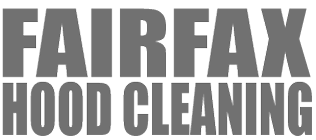The Rise of Ghost Kitchens and Their Unique Challenges
In the bustling world of food delivery, ghost kitchens have carved out a significant niche. With the promise of rapid meal preparation and delivery without the dine-in experience, these culinary outposts have swiftly gained popularity. However, they present unique challenges, particularly when it comes to hood cleaning and maintaining commercial kitchen hygiene.
Understanding Ghost Kitchens
For the uninitiated, ghost kitchens refer to cooking spaces set up solely for the purpose of preparing food for delivery. Unlike traditional restaurants, they have no dining area and operate independently or as part of a larger restaurant chain’s delivery segment. Consequently, these kitchen hubs focus on efficiency and speed, often housing multiple brands under one roof. Yet, this efficiency can sometimes overshadow essential operational tasks like restaurant hood cleaning.
Why Hood Cleaning Is Crucial
Regardless of whether you’re running a traditional restaurant or a ghost kitchen, ensuring your kitchen’s exhaust system is clean is non-negotiable. Regular commercial kitchen hood cleaning is vital to reduce fire risks, maintain efficient airflow, and comply with health and safety regulations. For ghost kitchens, where multiple cuisines might be prepared in a single day, grease and grime buildup can be substantial, making periodic exhaust hood cleaning even more critical.
Ghost Kitchen Hood Cleaning Requirements
Ghost kitchens often operate in confined spaces, which can accelerate the accumulation of grease and particles. Therefore, adhering to a strict Fairfax VA hood cleaning schedule is crucial. Here are some guidelines ghost kitchens should follow:
- Frequency: Regularly schedule hood and exhaust cleaning, preferably monthly, to prevent excessive buildup.
- Signage: Implement visual reminders for kitchen staff to keep air ducts clear of obstructions.
- Professional Insight: Hire professional cleaning services experienced in ghost kitchen environments to assess and clean exhaust systems effectively.
Challenges in Hood Cleaning for Ghost Kitchens
While the necessity of exhaust hood cleaning is apparent, executing it in a ghost kitchen’s fast-paced environment can be challenging:
1. Limited Access:
Ghost kitchens often have limited access due to shared facilities or restricted operational hours, complicating cleaning schedules. Secure access times that minimally disrupt operations to ensure thorough cleanings.
2. Diverse Cuisines:
With multiple types of cuisine prepared in a single kitchen, the type of grease and the rate of accumulation can vary. Professionals must tailor their cleaning strategies to address varying grease compositions effectively.
Benefits of Regular Hood Cleaning in Ghost Kitchens
Besides complying with safety standards, regular hood cleaning offers several benefits:
- Enhanced Safety: Mitigates fire hazards by reducing grease buildup.
- Improved Air Quality: Ensures better air circulation, reducing odors and leading to a healthier work environment for kitchen staff.
- Energy Efficiency: Clean hoods and ducts allow for more efficient ventilation, potentially lowering energy costs.
Partnering with Professionals for Optimal Results
For ghost kitchens, enlisting the help of professional cleaning services is a wise decision. Experts like Fairfax Hood Cleaning are adept at handling the nuances of restaurant hood cleaning in high-demand environments like ghost kitchens. By utilizing their expertise, you ensure compliance with local regulations while maintaining the highest hygiene standards.
Conclusion
As ghost kitchens continue to reshape the culinary landscape, prioritizing routine exhaust hood cleaning becomes more critical than ever. Not only does it ensure compliance with Fairfax VA regulations, but it also safeguards the health and efficiency of your kitchen operations. By understanding and addressing the unique challenges ghost kitchens face, operators can maintain a clean, safe, and efficient cooking environment, contributing to unequivocal success in this fast-evolving industry.


